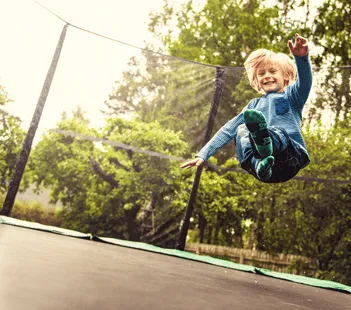January 01, 2017

Trampoline jumping is a common backyard sport and recreational activity. It is now experiencing a resurgence of popularity in commercial recreation trampoline jump facilities. Hospital emergency physician’s treat hundreds of thousands of trampoline-related injuries each year. The costs of medical, legal, insurance and disability expenses exceed four billion dollars. Injuries are significant among all age programs.
Always remember the following safety tips:
- Use of trampolines for physical education, competitive gymnastics, diving training and other similar activities requires careful adult supervision and proper safety measures.
- Trampolines should not be used for unsupervised recreational activity.
- Competent adult supervision and instruction is needed for children at all times.
- Only one person should use a trampoline at any time.
- Spotters should be present when participants are jumping. Somersaults or high-risk maneuvers should be avoided without proper supervision and instruction; these maneuvers should be done only with proper use of protective equipment, such as a harness.
- The trampoline-jumping surface should be placed at ground level.
- The supporting bars, strings and surrounding landing surfaces should have adequate protective padding.
- Equipment should be checked regularly for safety conditions.
- Safety net enclosures may give a false sense of security – most injuries occur on the trampoline surface.
- Trampolines are not recommended for children under 6 years of age.
- Make sure trampoline ladders are removed after use to prevent unsupervised access by young children.

